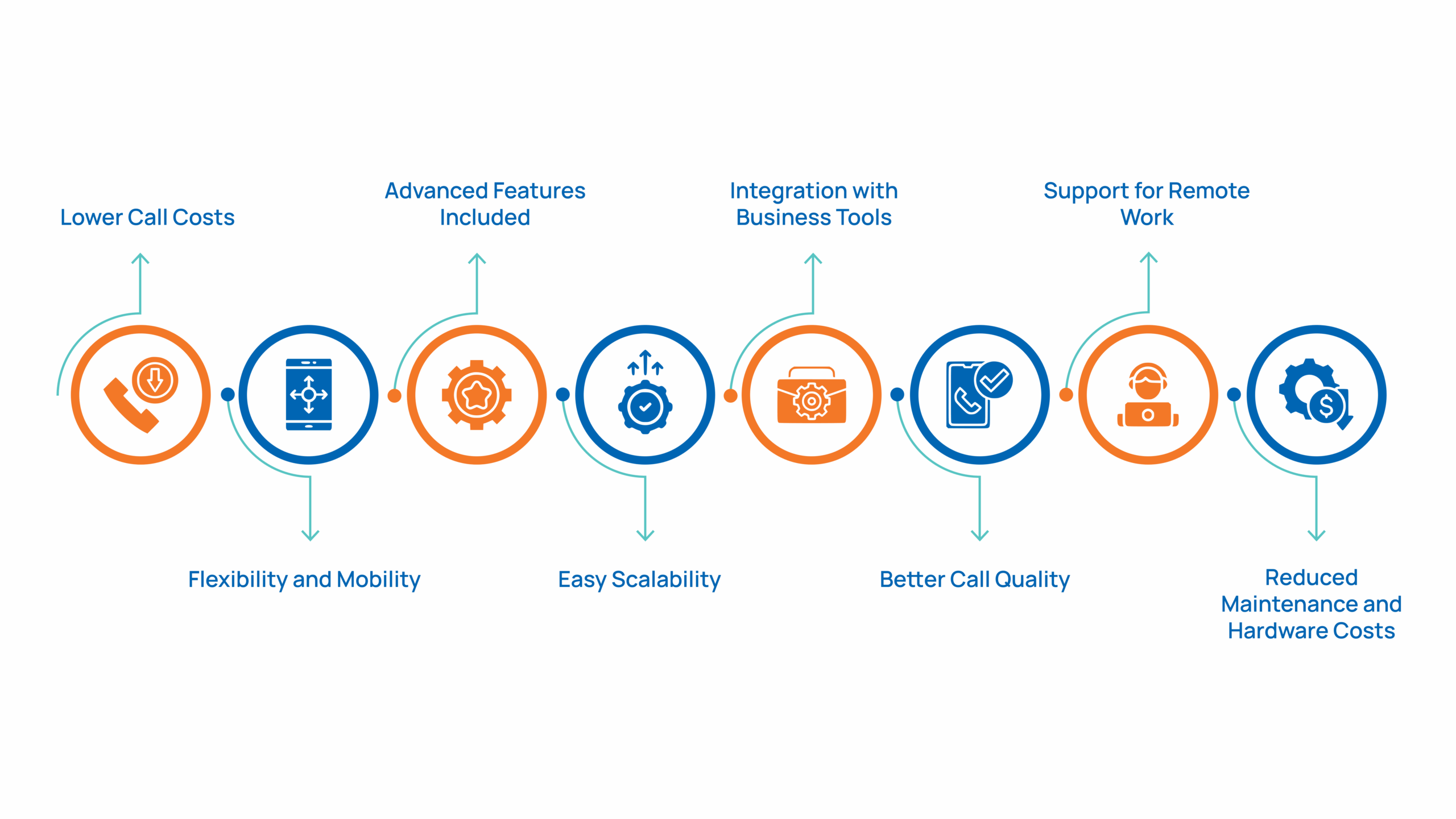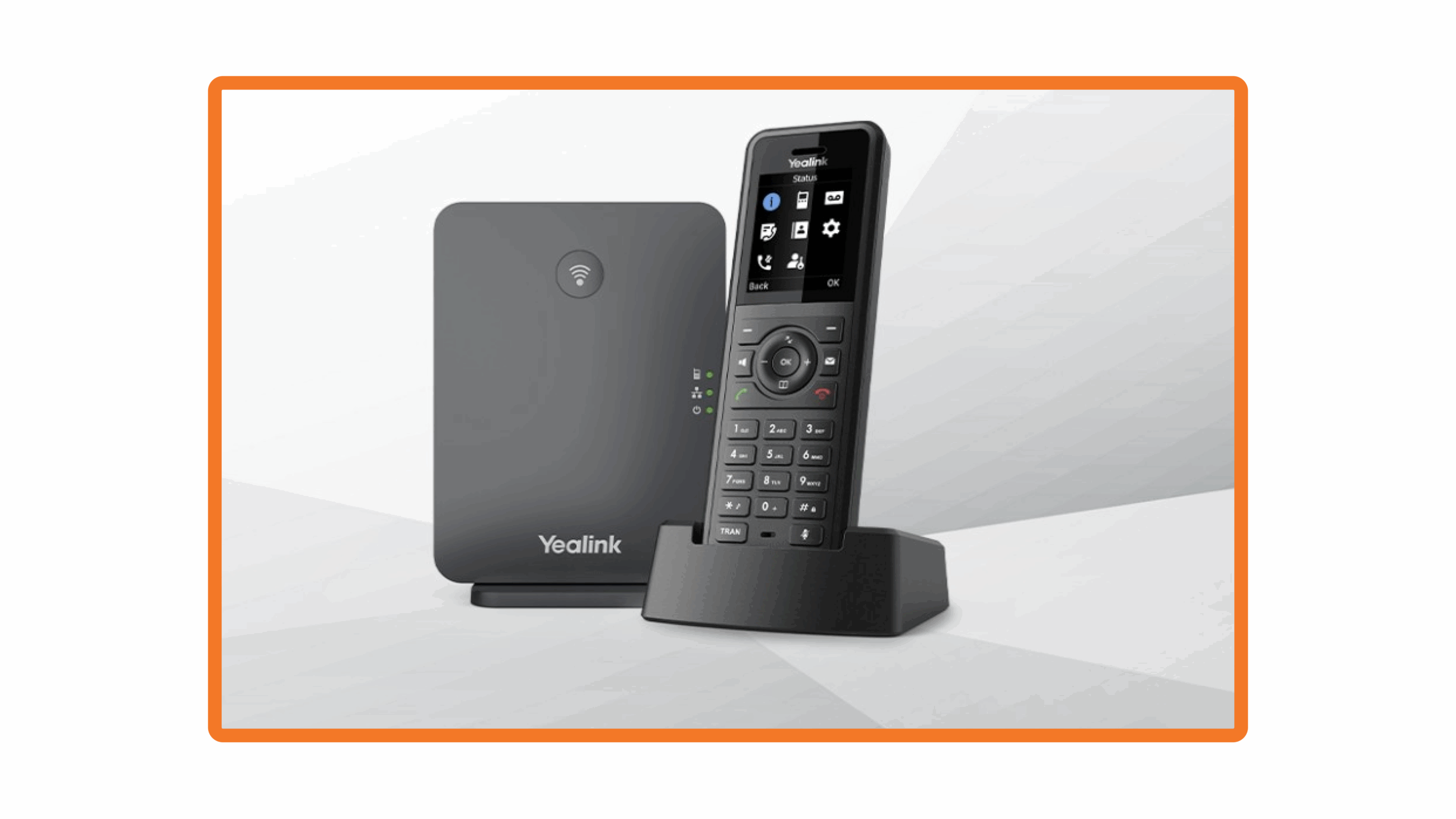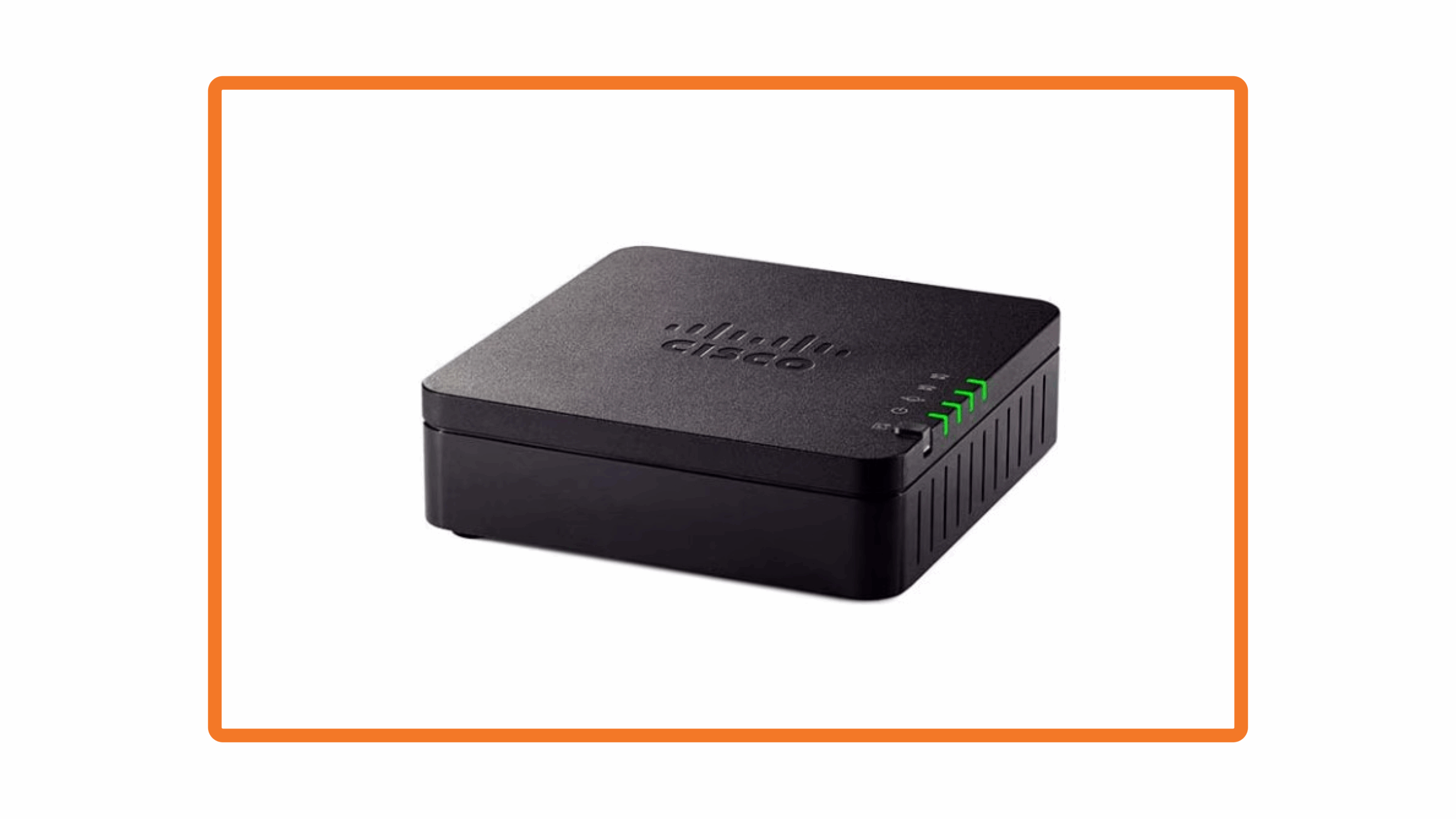Key Takeaways
|
What Makes VoIP Phones Different from Traditional Landlines?
A VoIP phone is a phone that uses an internet connection to make and receive calls instead of traditional copper landlines. Unlike a conventional wired desk phone that depends on a physical phone line installed by a local telephone provider, a VoIP phone works wherever there is a reliable internet connection. You can use a VoIP phone in two main ways:- With a physical VoIP desk phone connected to your network.
- Through a software app (softphone) on a computer or mobile device, using a headset or your device’s microphone and speakers.
-
Location Flexibility
-
Hardware Requirements
-
Service Provider Dependence
The Business Advantages of VoIP Phone Systems
 VoIP (Voice over Internet Protocol) phone systems have become a preferred choice for many businesses because they offer flexibility, cost savings, and advanced features that traditional phone lines cannot match. Below are the essential benefits to consider.
VoIP (Voice over Internet Protocol) phone systems have become a preferred choice for many businesses because they offer flexibility, cost savings, and advanced features that traditional phone lines cannot match. Below are the essential benefits to consider.
-
Lower Call Costs
-
Flexibility and Mobility
-
Advanced Features Included
-
Easy Scalability
-
Integration with Business Tools
-
Better Call Quality
-
Support for Remote Work
-
Reduced Maintenance and Hardware Costs
Types of VoIP Phones: Choosing the Right Fit for Your Business
VoIP phones come in many forms, each suited to different work environments. Some are physical devices, while others are software-based and run on computers or mobile devices. The right choice depends on how and where the phone will be used.-
Desk IP Phones (SIP)
 Desk IP phones are standard business handsets that connect to the internet through the SIP protocol. They often support Power over Ethernet (PoE) to reduce the need for extra cables. Many models include features like Gigabit passthrough, Busy Lamp Field (BLF) keys, and headset support through Electronic Hook Switch (EHS).
They are a reliable choice for fixed workstations where users handle frequent calls. This makes them ideal for front desks, finance departments, operations teams, and shared office spaces where durability and consistency are essential.
Desk IP phones are standard business handsets that connect to the internet through the SIP protocol. They often support Power over Ethernet (PoE) to reduce the need for extra cables. Many models include features like Gigabit passthrough, Busy Lamp Field (BLF) keys, and headset support through Electronic Hook Switch (EHS).
They are a reliable choice for fixed workstations where users handle frequent calls. This makes them ideal for front desks, finance departments, operations teams, and shared office spaces where durability and consistency are essential.
-
Touchscreen / Executive & Video Phones

-
DECT Cordless IP Phones
 DECT cordless phones connect wirelessly to a base station, giving users freedom to move around while staying connected. IP-DECT systems can include multiple bases, repeaters, and handsets to cover larger areas, such as warehouses or retail floors.
They offer long battery life and reliable call handoff between base stations. This makes them suitable for mobile roles like floor managers, nurses, retail associates, and plant operations staff.
DECT cordless phones connect wirelessly to a base station, giving users freedom to move around while staying connected. IP-DECT systems can include multiple bases, repeaters, and handsets to cover larger areas, such as warehouses or retail floors.
They offer long battery life and reliable call handoff between base stations. This makes them suitable for mobile roles like floor managers, nurses, retail associates, and plant operations staff.
-
Conference & Room Phones
 Conference phones are designed for group conversations in meeting rooms. They use full-duplex audio so people can talk and listen at the same time without interruptions. Key features include microphone pick-up range, the ability to add extra mics, and integration with conferencing platforms.
They are commonly used in huddle rooms, boardrooms, and collaborative spaces where teams need clear, uninterrupted audio for meetings with remote participants.
Conference phones are designed for group conversations in meeting rooms. They use full-duplex audio so people can talk and listen at the same time without interruptions. Key features include microphone pick-up range, the ability to add extra mics, and integration with conferencing platforms.
They are commonly used in huddle rooms, boardrooms, and collaborative spaces where teams need clear, uninterrupted audio for meetings with remote participants.
-
Softphones (Desktop Apps)
-
Mobile VoIP Apps
-
Web (Browser) Phones via WebRTC
-
ATAs (Analog Telephone Adapters)
 An ATA connects an analog device, like a traditional phone, fax machine, elevator phone, or door entry system to a VoIP service. It acts as a bridge between the old technology and the new network.
When using fax over VoIP, compatibility with T.38 protocol or G.711 pass-through is important for reliable transmission. ATAs are most useful when a business needs to keep certain legacy devices in service.
An ATA connects an analog device, like a traditional phone, fax machine, elevator phone, or door entry system to a VoIP service. It acts as a bridge between the old technology and the new network.
When using fax over VoIP, compatibility with T.38 protocol or G.711 pass-through is important for reliable transmission. ATAs are most useful when a business needs to keep certain legacy devices in service.
-
Paging & Intercom Endpoints
How to Choose the Right VoIP Phone for Your Business?
The right VoIP phone depends on your business’s specific needs. Before choosing a device, it’s essential to look at a few key factors that will affect daily use and long-term performance. Here are a few factors to consider before choosing a VoIP phone for your business:-
Number of Lines
-
Brand and Reliability
-
Headset Compatibility
-
Power Over Ethernet (PoE)
-
Ongoing Updates
Transform Customer Interactions into Lasting Connections with PerfectSoft.AI
 At PerfectSoft.AI, we deliver intelligent, high-performance contact center solutions to improve customer satisfaction, boost agent productivity, and streamline operations.
Whether you manage a large-scale BPO, a customer service department, or an outbound sales team, our technology helps you stay connected across all channels while ensuring crystal-clear
We provide advanced VoIP-based Telecom Voice Services that guarantee:
At PerfectSoft.AI, we deliver intelligent, high-performance contact center solutions to improve customer satisfaction, boost agent productivity, and streamline operations.
Whether you manage a large-scale BPO, a customer service department, or an outbound sales team, our technology helps you stay connected across all channels while ensuring crystal-clear
We provide advanced VoIP-based Telecom Voice Services that guarantee:
- High-Quality Voice Calls – Clear and uninterrupted voice communication.
- Reliable Connectivity – Stable and secure connections across all regions.
- Global Reach – Seamless communication with teams and customers worldwide.


Comments